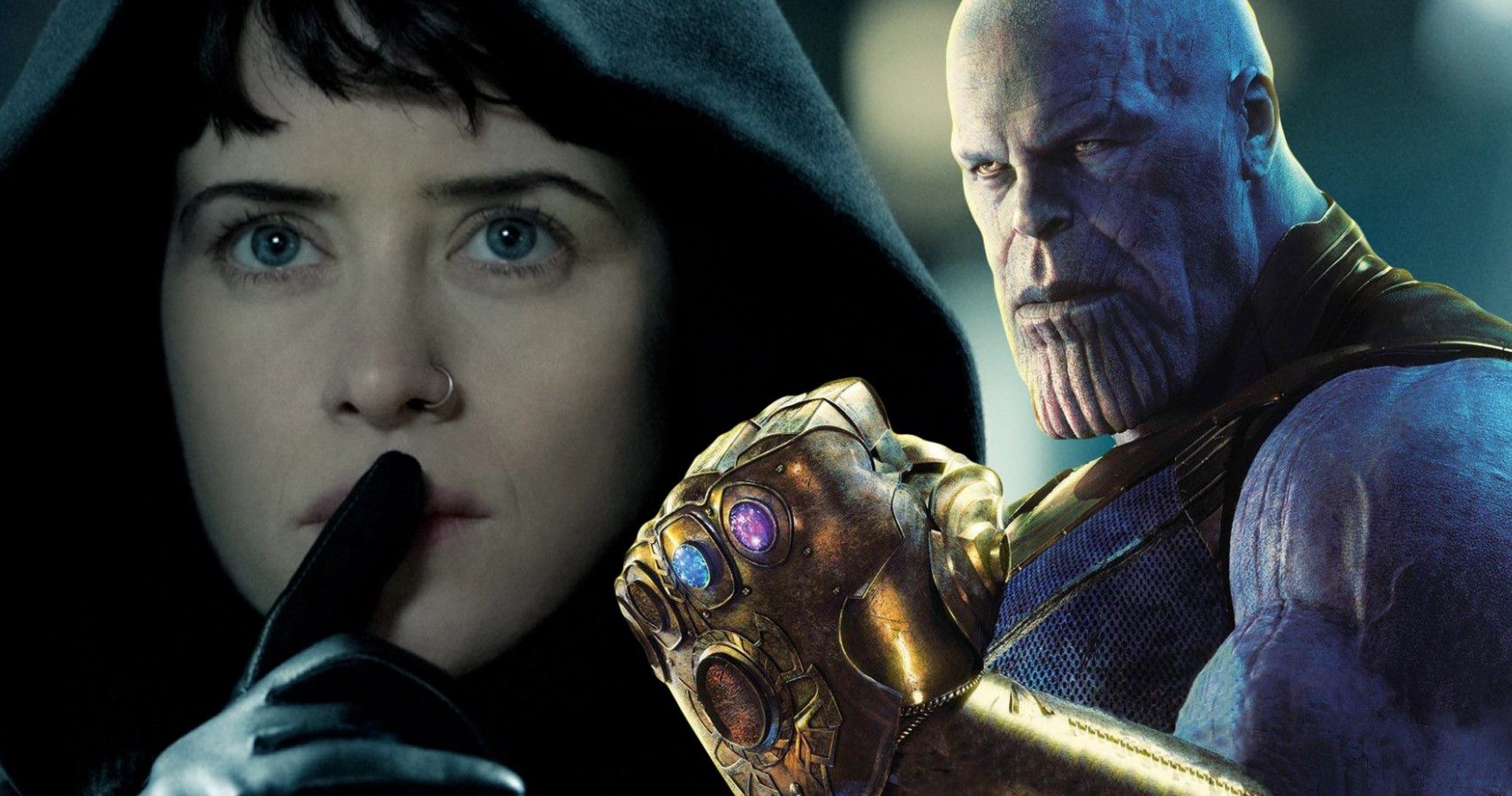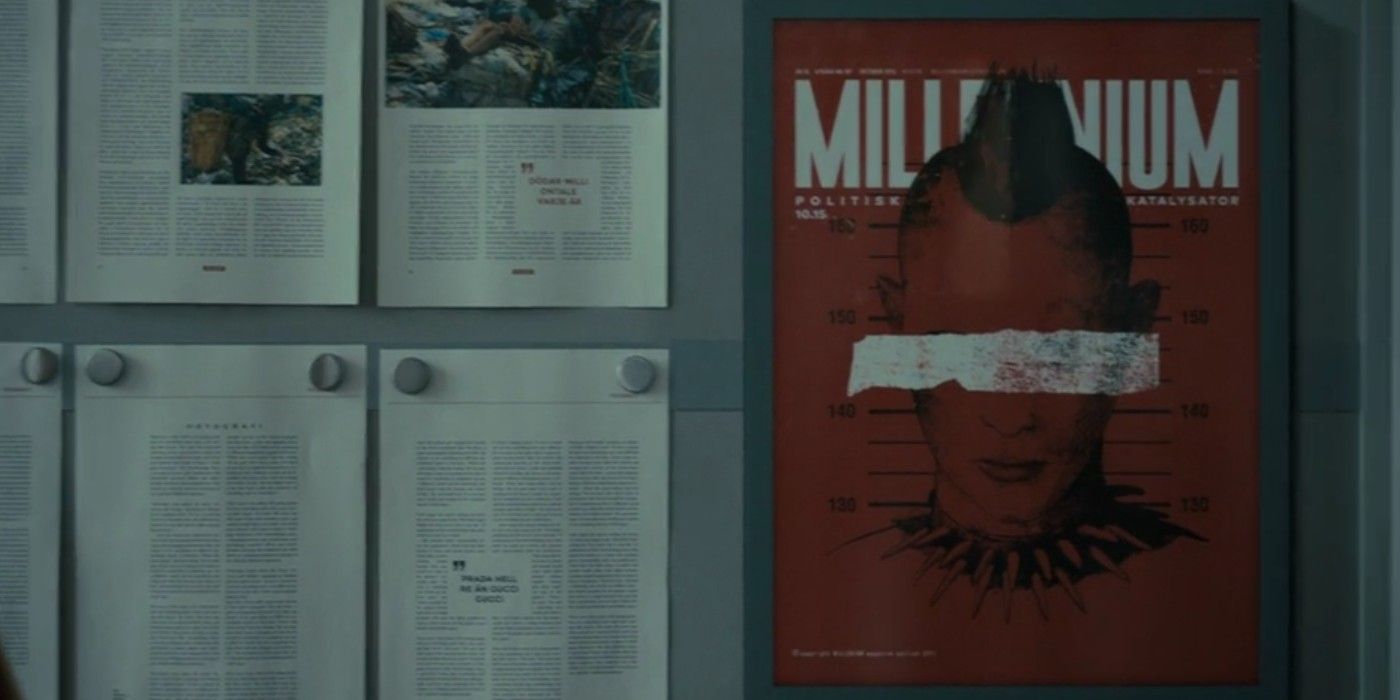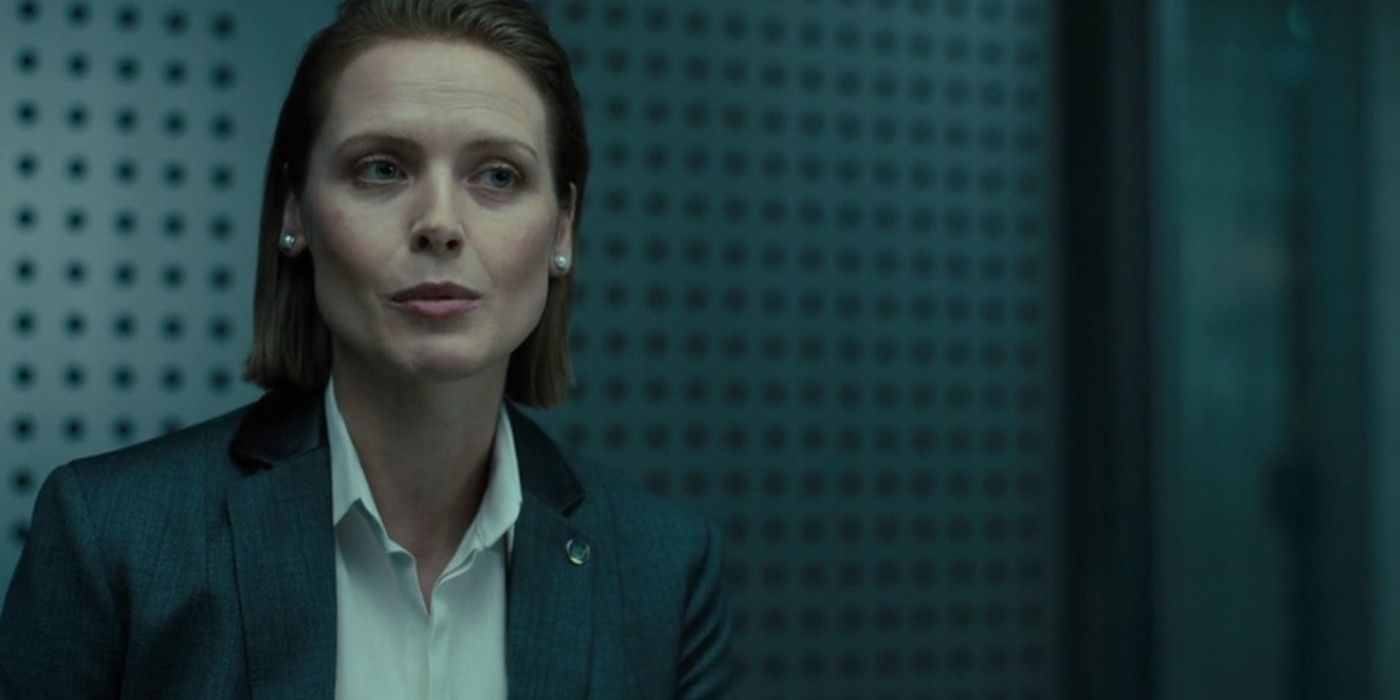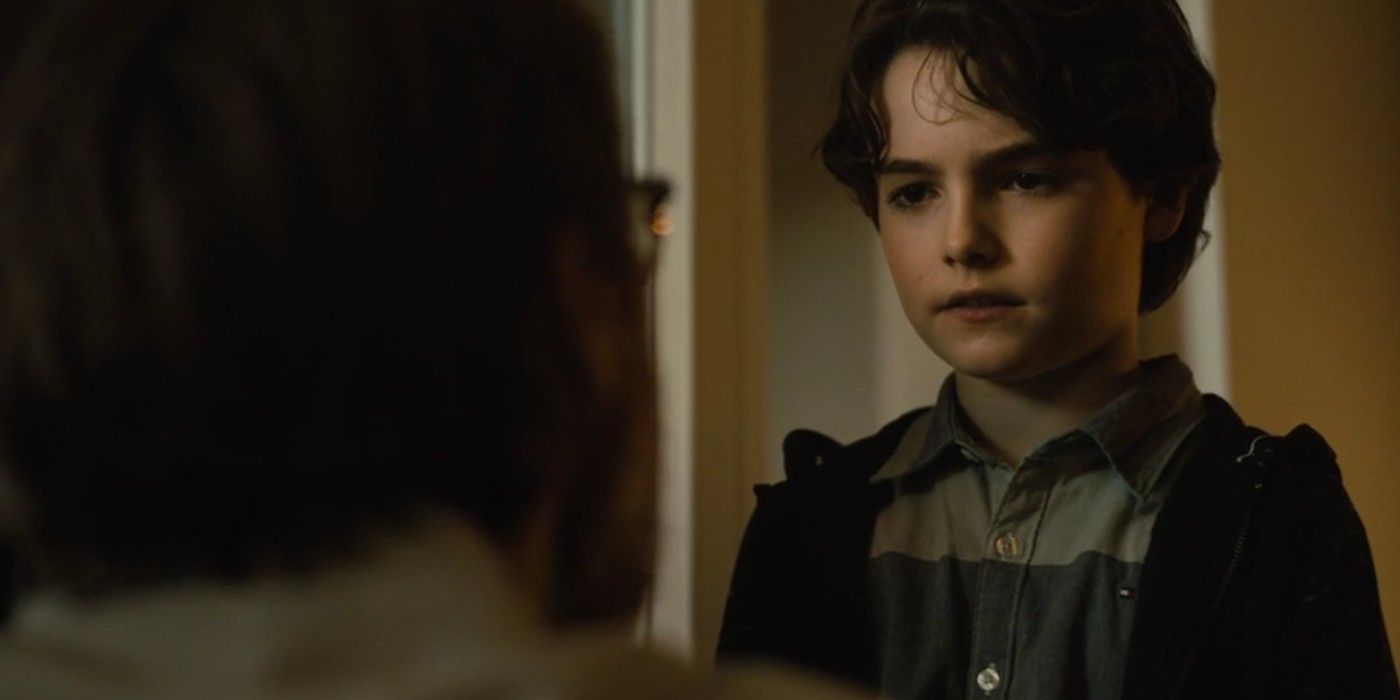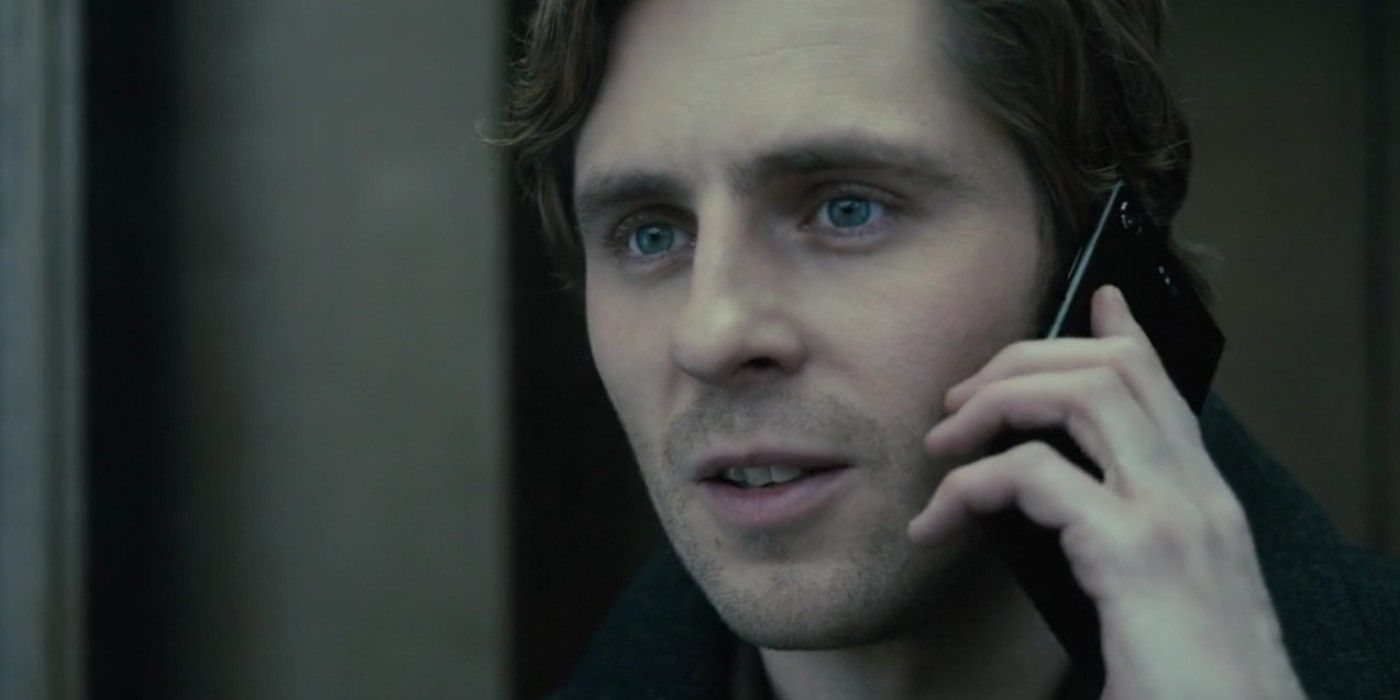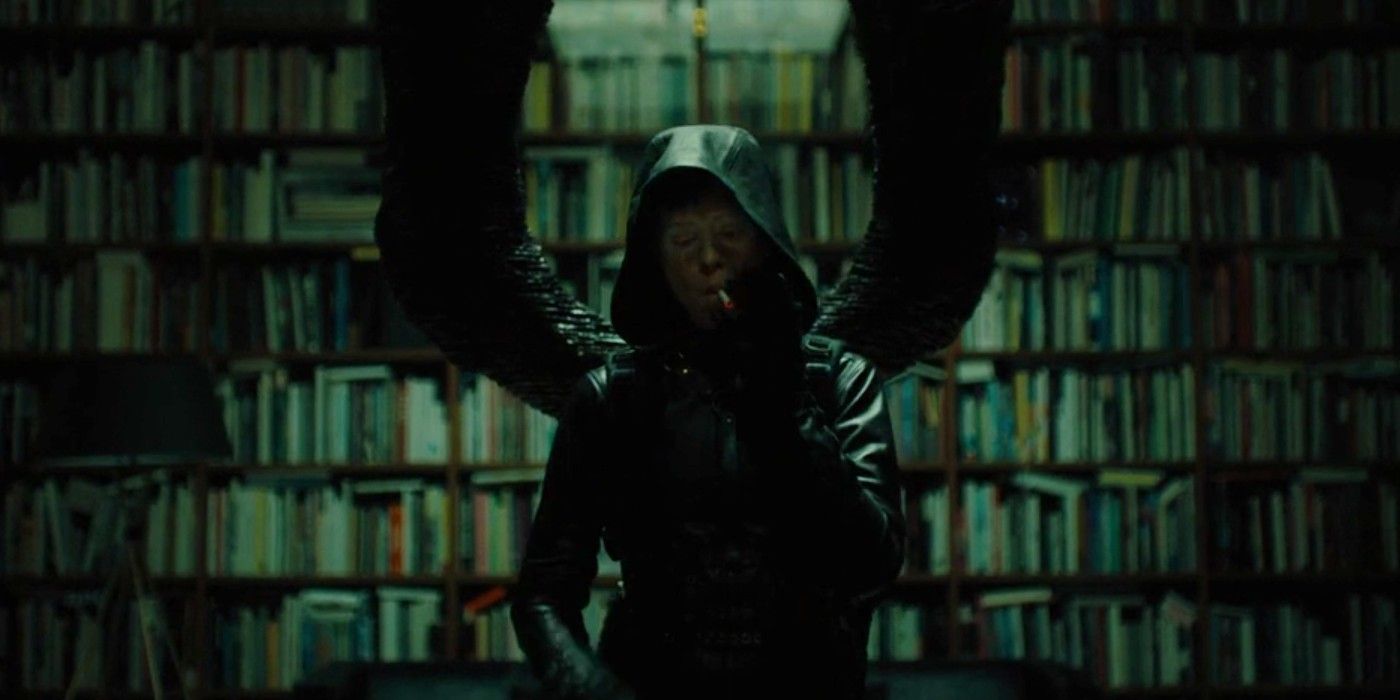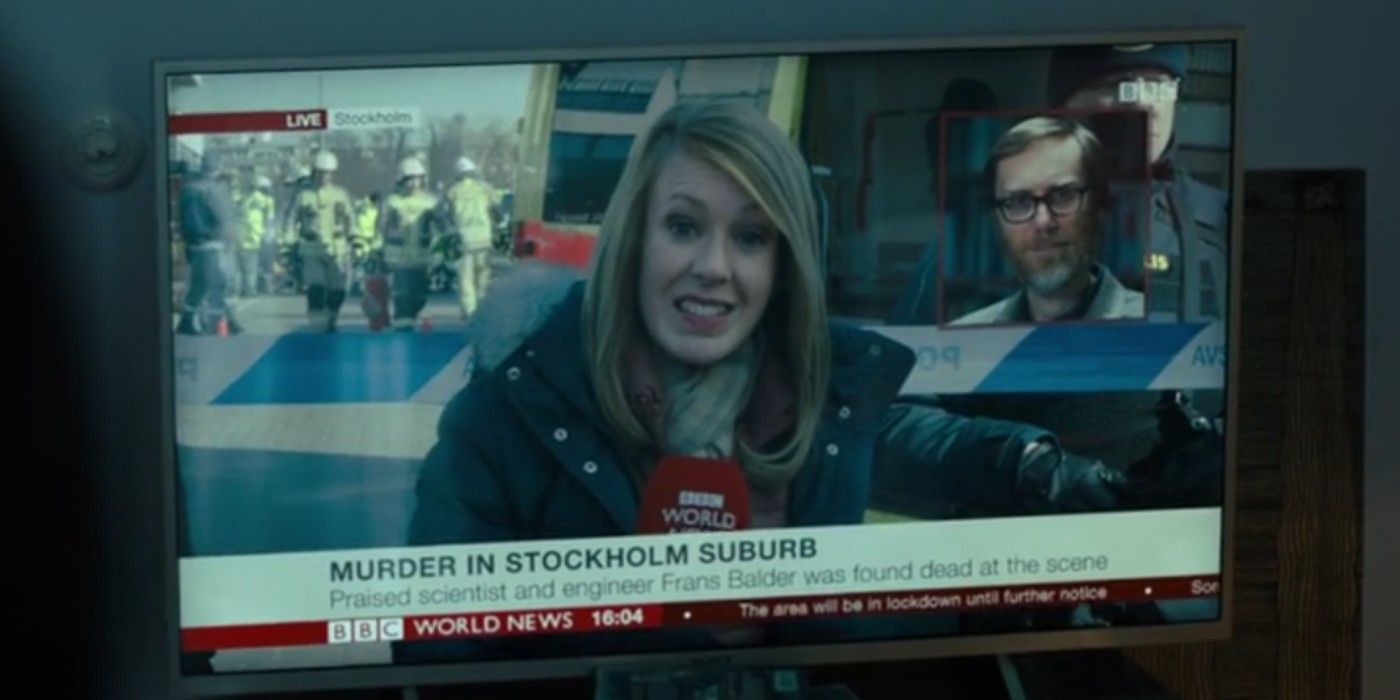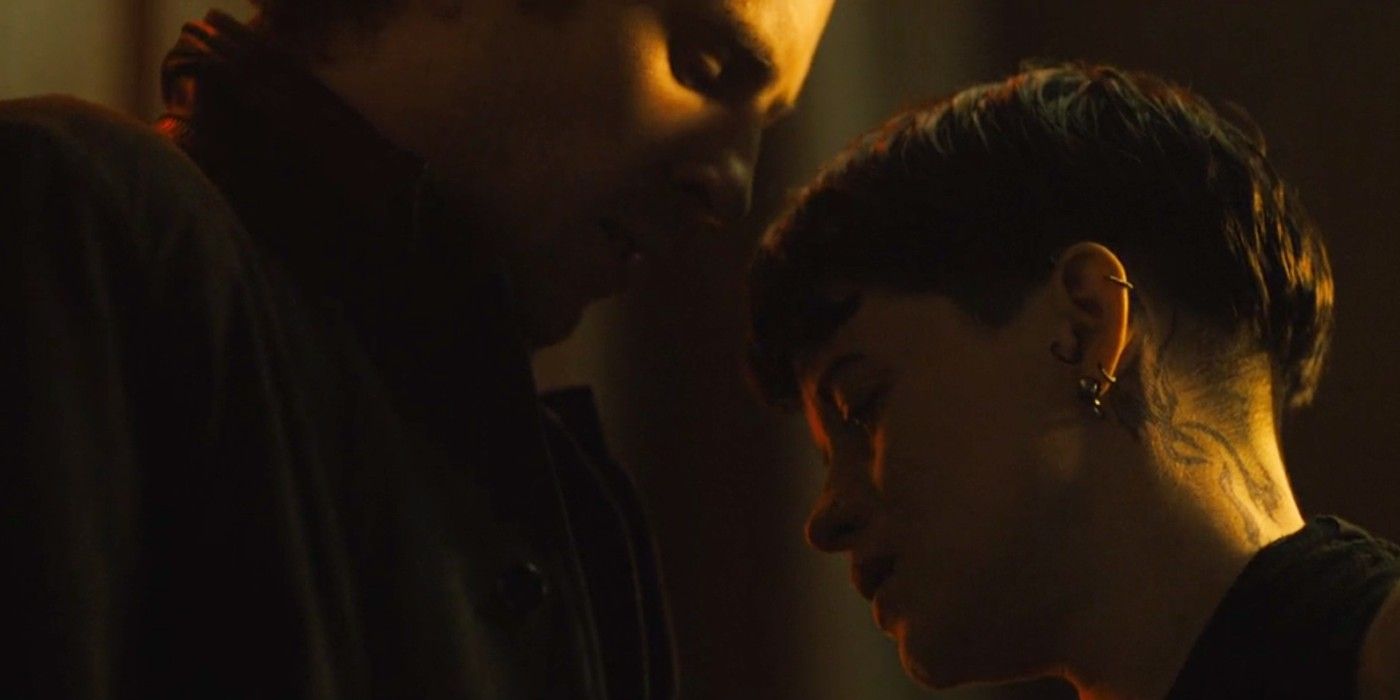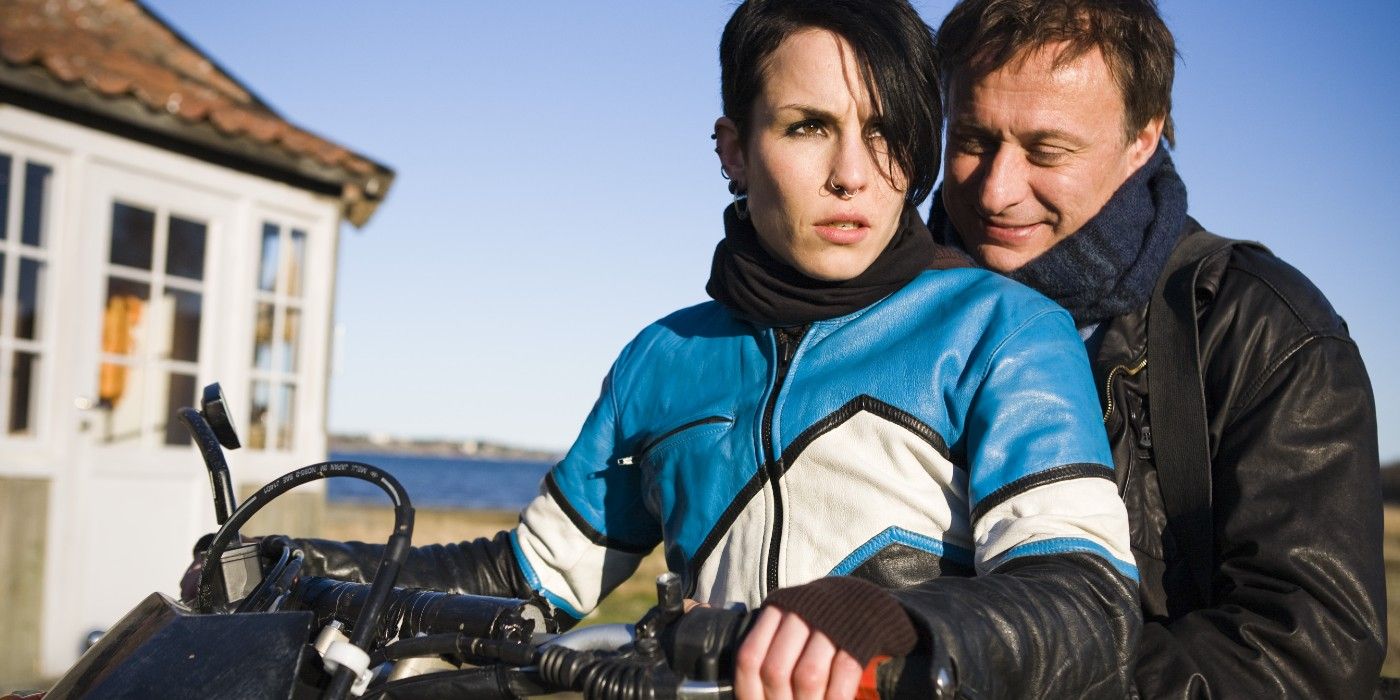Acting as a soft reboot for both the original Millennium Trilogy from Sweden and the American remake of The Girl with the Dragon Tattoo, the fifth Lisbeth Salander movie follows her latest conspiracy and a dangerous trek through memory lane.
In more ways than one, The Girl in the Spider’s Web is an in-name-only adaptation, changing a lot of plot points, arcs, and revelations for its transition to the big screen. Not all of these deviations paid off, though they do make for an interesting comparison with the printed version.
The Spiders Are Led By Thanos
This isn’t a joke: the Spider Society (shortened to “Spiders” for the movie) is led by a hacker named after Marvel Comic’s mad titan. “Thanos” is actually Camilla Salander (more on her later), and she uses this alias to command the Russian crime syndicate from the shadows. Similarly, Lisbeth goes by the hacker name “Wasp,” in reference to Janet van Dyne of the Avengers.
This deliberate choice in codenames is an extension of the rivalry between Lisbeth and Camilla, and NSA agent Edwin Needham connects the dots. For obvious copyright reasons, the movie drops this bit of pop culture-laced foreshadowing.
Millennium Makes A Comeback
In both movie and book, the magazine Millennium is in a slump after The Girl Who Kicked the Hornet’s Nest. For the movie, this is an unstoppable downturn as social media changes journalism forever. The movie ends uncharacteristically and cynically, with Mikael accepting this fate, deleting his would-be piece, and choosing to go with the flow.
The book ends on a more optimistic and fitting note, with Mikael’s newest investigative article reviving interest and integrity for Millennium. Not only that but Millennium “mysteriously” gets a big financial grant from some generous Gibraltarian (aka Lisbeth using offshore accounts) that allows them to buy out predatory investors who were about to do the same to them.
The NSA Are The Bad Guys, Not SAPO
The Girl in the Spider’s Web feels more like a James Bond knock-off than a Millennium movie. At its center is the National Security Agency (NSA)-made Firefall, a program that grants users control of all nuclear weapons. The twist is that the Swedish Security Service (SAPO) is working with the Spiders to get its access codes from Frans, its creator. Meanwhile, the NSA just wants its creation back.
While boring in comparison, the book’s conspiracy is more engaging. Frans discovers that his employers are working with the NSA and Spider Society in their illegal espionage, and he’s about to be killed for it. Firefall isn’t just nonexistent, but SAPO are the good guys while the NSA is anything but neutral. In fact, SAPO deputy director Gabriella Grane (above) gets promoted to the UN at the book’s end instead of getting killed by Camilla.
August Balder Is Autistic
In both incarnations, everyone has their sights trained on Frans. Though he dies early, the truth is locked away in his son’s mind. In the movie, August has Firefall’s passwords committed to memory through riddles, which his father taught as a failsafe in the event of his death. In the book, August is an autistic-savant child who doesn’t have passwords locked mentally. However, he’s still important to the plot.
Due to August’s special needs, Frans foregoes witness protection, leaving him open to the Spiders. Following Frans’ murder, Lisbeth and Mikael protect him since he’s a key witness and an innocent kid. Additionally, August’s mother has a bigger presence here, while she basically gets a cameo in the movie’s end.
Camilla Salander Is Downright Evil
The Girl in the Spider’s Web reveals that Lisbeth actually has a sister, Camilla, who she wishes is dead. This isn’t because of hatred, but immense guilt for not being able to save Camilla from their abusive father. Camilla is alive and very spiteful of Lisbeth, though, feeling abandoned and betrayed. Camilla’s implied suicide at the end comes off as more tragic and cathartic than deserved. Meanwhile, in the book, Camilla is straight-up villainous.
Not only was she supportive of her crimelord father’s abusive streak, but she victimized Lisbeth too. Camilla and Lisbeth barely even interacted, since Lisbeth was sent to a psychiatric institution after trying to make her father explode with a petrol bomb. Meanwhile, Camilla ended up in the foster system before taking over her father’s empire and turning it into the Spider Society.
Mikael Asks Lisbeth For Help
The movie kicks off when the Spiders blow up Lisbeth’s secret lair and her barely escaping arrest. With nowhere left to go, she turns to her former ally and fling Mikael, though she looks like she’d have rather picked any other alternative. Meanwhile, in the book, it’s Mikael who looks to Lisbeth for help.
At first, Frans turns to Mikael before he’s killed. Realizing that the conspiracy is bigger than expected, Mikael calls Lisbeth for reinforcements, which she provides. For most of the book, Lisbeth was busy tracking down Camilla before realizing her estranged sister’s connection to Frans’ murder.
Lisbeth Is Not A Vigilante
A major point in the movie is how Lisabeth transformed herself into a vigilante who saves abused women by targeting the monstrous men at fault. This isn’t just a career change but something that bites Lisbeth back later, since Camillia is bitter about how the “savior of women” never saved her.
In the book, Lisbeth isn’t this heroic. It’s not that she doesn’t care for others, but she doesn’t rebuild herself as an avenging angel. Here, she’s still the same hacker-for-hire with a heart of gold she was in the Millennium Trilogy. She initially helps Frans for cash but after his assassination, she exposes the NSA’s wrongdoings and protects, August free of charge.
Nobody Frames Lisbeth For Murder
At its heart, The Girl in the Spider’s Web is a whodunit movie, with Lisbeth framed for a murder connected to a grander conspiracy. She spends the movie unraveling the truth while clearing her name. Meanwhile, the book tells an entirely different story.
The book is a conspiracy thriller, with Mikael and Lisbeth unearthing interagency corruption. In fact, Frans’ murder is resolved fairly quick here. Frans was assassinated when Mikael was on his way to meet him, and the journalist later sees August drawing the killer’s face in great detail. The rest of the story turns into a manhunt to get Frans’ killers instead of a run from the compromised SAPO agents.
Lisbeth & Mikael Reconnect
The Girl in the Spider’s Web could be seen as the end of the cinematic Millennium saga, as it closes with Lisbeth and Mikael going their separate ways after one last ride. Not only that, but they part on shaky terms at best, since Lisbeth is still pissed at Mikael for publishing her entire history for “clout” – despite agreeing to let the journalist do so in previous movies. That, and they barely even share the screen together.
The opposite happens in the book, where they reconnect after spending an unspecified number of years apart after The Girl Who Kicked the Hornet’s Nest. The two don’t even interact for most of the book, only joining forces at the midpoint where they actively help each other instead of begrudgingly. The book ends with Lisbeth visiting Mikael in the hopes of reigniting their relationship.
Lisbeth & Mikael’s Romance Is Watered Down
The wide age gap between Lisbeth and Mikael has always been a constant in the Millennium stories, with Lisbeth being somewhere in her 20s and Mikael being a middle-aged divorced man. This unconventional romance (especially in The Girl with the Dragon Tattoo; above) doesn’t just add to the series’ overall subversive energy, but it also emphasizes the two’s outsider angst that only they can truly understand.
By shrinking their age gap and romance, the movie dilutes what made them unique in the first place. This time around, Mikael is just a few years older than Lisbeth. Additionally, they act more like standoffish exes than an odd yet genuine couple here, with Mikael looking to revive past feelings while Lisbeth just tolerates his presence. Long story short, they’re just another movie couple.

